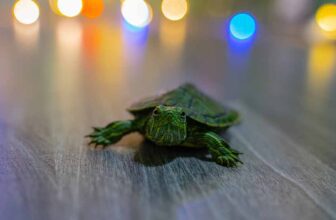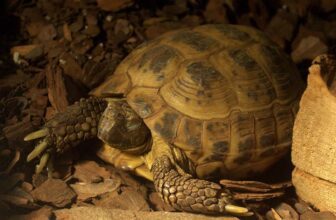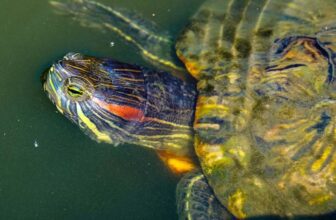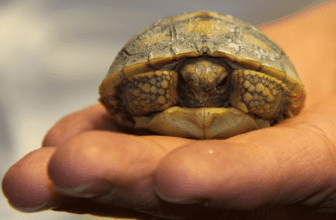Known for its red, orange, and bright yellow markings, the South American native Red Footed Tortoise is not only social, curious, and brave, it is easy to care for, and has a unique personality that makes it suitable to be a great pet.
But if you are considering adopting one as a pet, be aware that you are in for a lengthy (in most cases, lifelong) commitment), as these animals live anywhere from 50 to 90 years in captivity. They also require large outdoor pens, so only a domicile with ample outdoor space would work for them to thrive. If you are still interested, keep reading our guide to find out everything you need to know about helping to adopt a Red Footed Tortoise into your home.
Interesting Information About The Red Footed Tortoise

Hailing from forests and grasslands of South America, the Red Footed Tortoises are found in a wide geographical scope, from Argentina to Bolivia, and well into Brazil, as well as the Andes regions. They are just one of three species of tortoise found on the continent.
They have a fruit-based diet, but as they travel after eating, they excrete seeds, helping to disperse all over forest floors. Herpetologists identify them by their legs which are covered in small red scales (as per their namesake), with gorgeous shell patterns, which are generally black or dark brown, though tinged with yellow accents.
Most pet owners are informed that the Red Footed Tortoise thrives when raised in either small groups or pairs. In any case, they are not meant for a solitary life. They require a lot of roaming and grazing space, whether they are indoor or outdoor kept pets, though indoor pens must be equipped with a basking spot and sufficient UVB lighting.
Things That Are Great About The Red Footed Tortoise
Among the things that make a Red Footed Tortoise a great pet is the fact that they thrive when raised in captivity. They are a great choice for those who want a friend for life, as they can live as long as 90 years (with optimal care). Best suited for individuals who like to stick to a daily schedule, this species of tortoise makes a terrific pet.
The Red-Footed Tortoise has a curious and outgoing personality, is nice to look at with its unique, vivid colorations, and can be acquired with relative ease at a decent price point. They do, however, have some particular humidity requirements to be healthy, require a large enclosure to live in, and are prone to bacteria infestations on their shells if not regularly cleaned.
The Red-Footed Tortoise Appearance
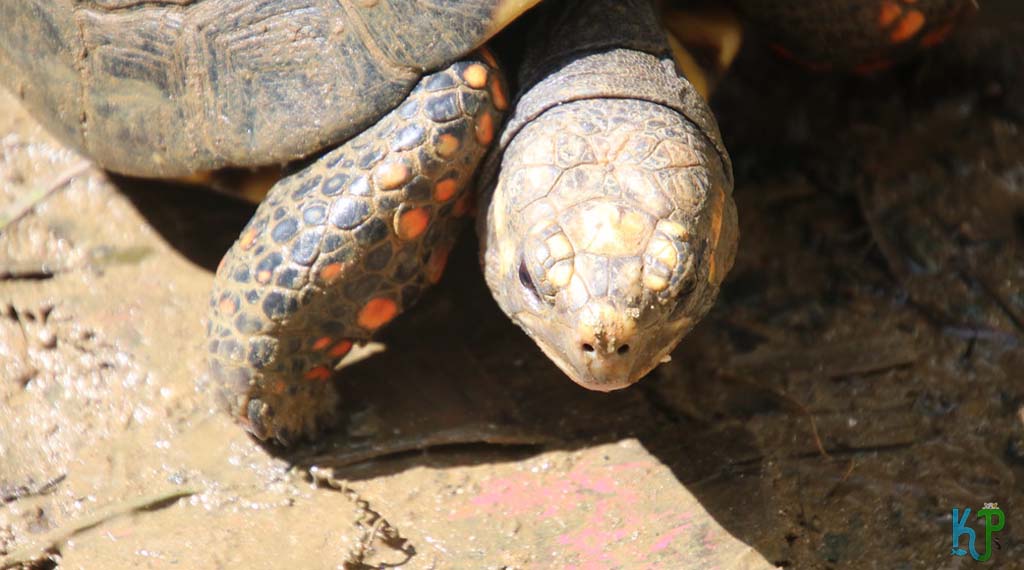
One of the most popular aspects of the Red Footed Tortoise is the coloration that its name derives from. This includes yellow, red, and orange markings around its head, legs, and tail. An adult Red-Footed Tortoise can weigh between 20 and 30 lbs. with a length generally averaging between 11 to 14 inches by the time they are a decade old.
There have been cases of particularly large individuals in the species, however, with the largest ever documented weighing 60 pounds and exceeding 2 feet in length. As hatchlings, they are a mere two ounces and only about 2 inches long but grow at about 1-2 inches per year.
The genders are sexually dimorphic, with females being generally smaller than males, with a less concave shell, and a shorter tale. The males can also swing their heavier tails back and forth more due to a wider anal notch.
Their shells are generally dark brown to black in coloration, with a darker periphery with a lighter center. The scutes are pale gold in the middle and dark brown on the edges (the opposite of what one might find on a Russian turtle), while their skin is nearly black, adorned with reddish markings, which vary significantly by factors including their diet, their geographic location, and their genetics.
The Red Footed Tortoise’s Diet
The Red-Footed Tortoise primarily consumes fruit, flowers, leafy plants, fungi, and a variety of grasses, though they have been known to snack on slugs, snails, and other slow-moving invertebrates from time to time for protein.
While greenery makes up the primary portion of their diet, the Red Footed Tortoise needs proteins once weekly. Pet owners can feed the tortoise lean meat or cat food, but only one ounce every week. Boiled chicken, snails, slugs, and earthworms suffice if there is no cat food available.
Generally, Red-Footed Tortoises will stuff themselves on meals they forage for, then take an extended rest, making it important to have their meals be comprised of the right portions of elements they need. The best rule of thumb is to have these meals be 10% vegetables, 30% fruits, and 60% greens, with the amount of the latter generally equaling the body size of the animal.
Their feeding should be kept on schedule, providing food around the same time every morning. However, if the tortoise is not eating everything, scale back their diet, basing it on how much the animal eats. After an hour of the food being available remove it from the enclosure. This will prevent the animal from overeating and avert obesity issues.
Red Footed Tortoises aren’t very picky eaters, so they happily consume a wide food variety, so the 60/20/10 rule with food ratios works out great. The only additional thing to do is to sprinkle their greens once or twice a week with a calcium powder supplement.
The animals also need a shallow but large water dish or a small pond to drink from and soak in. Because they generally defecate while soaking, the water should be changed regularly to prevent bacteria from growing and ultimately making the animal ill.
Which Fruits, Vegetables, And Greens Work Best For A Red Footed Tortoise?
Red Footed Tortoises love mangos, papayas, bananas, and other tropical fruits, but they will also happily eat pineapples, plums, pears, and apples. For vegetables, they tend to prefer pumpkin, carrots, and squash, while their ideal greens are collard, dandelion, and turnip greens, as well as cabbage, and kale. Since iceberg lettuce has a nominal nutritional value, it is advised to not be part of the animal’s diet.
Life Expectancy Of A Red Footed Tortoise
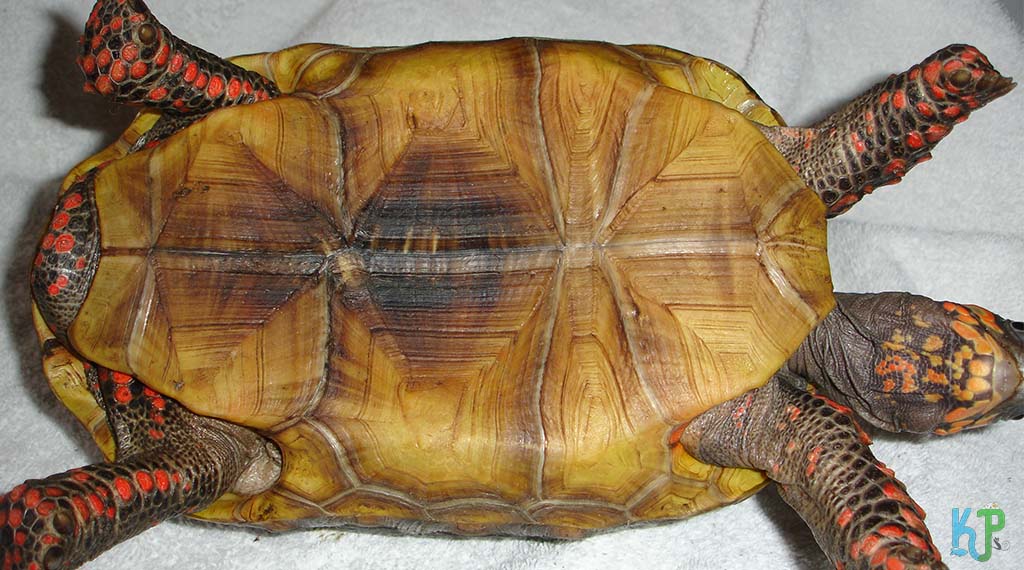
The lifespan of Red-Footed Tortoises depends on where they live. In the wild, it is generally between 20 and 40 years, but with proper care in captivity, they can live for over 50. Some have even been reported as living for more than 80 years. The key component is their health which, if they are housed in a clean and adequate enclosure, and fed correctly, along with regular vet appointments, is certainly proper care.
Some health problems are common as are some injuries, so owners should be aware of these to help their pets heal through remedies. Some of these include cuts on the surface, cracked beaks, and overgrown toenails.
Cuts can be the result of household items but can be treated with warm water and non-scented soap. Daily application will help to keep them from being infected and to stay clean during the healing process. If the animal is not raised on a proper substrate, their toenails can overgrow. To maintain them, a dirt substance can wear them down or dog nail clippers can be used to shorten them. Don’t be too concerned about cracked beaks either, when a turtle is given food on a rough surface, it trims the beak naturally.
When husbandry is poor, Red-Footed Tortoises can develop several illnesses. Many of the illnesses stem from the poorly cleaned enclosure, stress, or temperature being too low. Commonly, Red-Footed Tortoises can develop parasitic ailments, infections, or shell rot. Respiratory infections are generally identified by wheezing sounds, while shell rot is a bacterial problem where the microbes eat away at the shell. Parasites could be on the animal’s skin or inside their bodies, in which case they can sometimes be seen upon an examination of the animal’s feces.
Active, alert, mobile tortoises with clear skin and urine, a healthy appetite, and firm, normally formed, dry feces are generally healthy, while lethargic unresponsive animals lacking appetite, with sunken eyes, flaky, dry skin, or discharge around various facial features are exhibiting symptoms of illness.
Setting Up Enclosure For A Red Footed Tortoise
The habitats of a Red-Footed Tortoise range from those around the Caribbean islands and throughout the South American continent, and include grasslands, savannas, as well as dry-thorny, temperate, and rainforests. They enjoy cover, moderate temperatures, and high humidity, along with requiring soil for burrowing. Since mud makes burrowing challenging, tortoises tend to avoid it.
Assuring they have high humidity is essential to their health, but is also the most challenging aspect of keeping Red-Footed Tortoises as pets. They also require plenty of UVB lighting, basking areas, and ample room to graze and roam around, requiring their enclosure to be roomy, as well as stimulating and enriching.
Size Of The Enclosure For A Red Footed Tortoise
Hatchlings and juveniles of the species will do fine in a 50-gallon tank, but once they begin to reach their 6th year (adult age), the Red-Footed Tortoises will require more roaming space, they will need the ability to roam around a 30 to 40 sq. foot outdoor or indoor pen. The pen should include a variety of elements:
- Driftwood and rocks for the tortoise to climb over
- Potted, live, but nontoxic plants (the potting is to keep the animal from destroying them)
- A wire roof
- 2 foot-walls sturdy walls (to prevent escaping), 6 inches of which are subterranean
- A mix of cypress mulch, orchid bark, and sphagnum moss substrate to allow burrowing and humidity regulation (moisture is well absorbed by naturalistic substrates)
- UVB lighting (with a 10% UVB fluorescent lightbulb positioned around 2 feet away from the enclosure and changed yearly) to allow their bodies to process protein in a healthy way (if living indoors, while outdoor dwelling animals will get UVB from the sun)
- A basking bulb positioned over a basking area, with temperatures over 90F degrees
- Pen-wide temperatures should be between 80 and 85F degrees during the daytime, but if it drops, a ceramic heater should be used (never one that the animal could burn itself on)
- Maintaining temperatures between 70 and 75 degrees at night, but never below to make sure that Red-Footed Tortoise does not incur hypothermia.
- A moist dig box helps the animal regulate its own humidity (which needs to be between 50% and 70%), while mosses help increase it.
- Preferable a 6X6 (at a minimum) outdoor area
Misting And Cleaning for Red Footed Tortoise
When not adequately maintained due to the high humidity requirements, the enclosures of a Red-Footed Tortoise can be contaminated quite quickly. To keep things clean, change the water pan daily, remove clean waste, remove excess food an hour after feeding time, and change substrate out weekly.
Additionally, misting can be used when the water is changed to increase the enclosure’s humidity. The water dish, rocks, logs, and any other elements in the enclosure should be scrubbed with a combination of soap and warm water to keep things clean.
Behaviors And Habits Of A Red Footed Tortoise
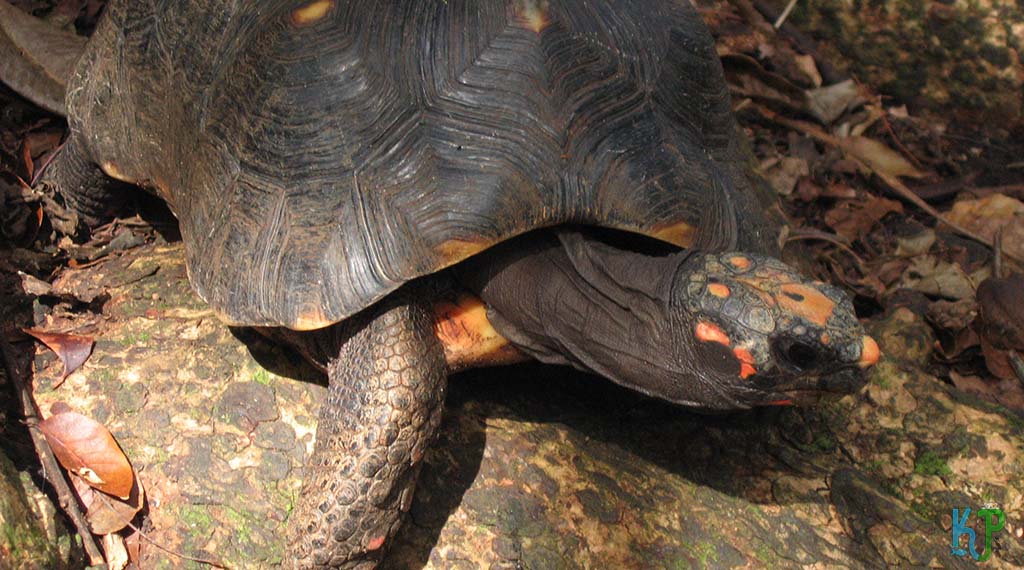
The primary place where humans have observed the behaviors of a Red-Footed Tortoise is in captivity since not much is known about it in the wild. This type of tortoise is most active in the daytime when they graze on grasses, bask, and burrow, which makes it different from the breeds that live in deserts. These activities are the ways that a Red-Footed Tortoise achieves its happiest state.
It isn’t uncommon for this species to not be very active or maneuver around much after a large meal, so if one has eaten and isn’t moving, don’t be alarmed. When they are on the move, however, they have great memory retention about water spots, spots where they have formally found fruits, and other things they were happy to acquire.
The Red-Footed Tortoise isn’t a territorial animal, but when males vie for the attention of females during mating season, they can show signs of aggression. Their communication is generally elicited through clucks, which are especially prominent during mating and courtship. Head bobbing is also very common. Since tortoises don’t have a flexible diaphragm, they bob their heads while breathing air in to pump their throat.
Do Red Footed Tortoises Make Good Pets?
The large personalities, courageous nature, and ease of care make Red-Footed Tortoises terrific pets. But it is important to remember that being handled is not something they enjoy and while they are not prone to biting if they do their strong jaws will certainly subdue the unlucky recipient to pain. If handling is necessary, make sure to hold the animal close to the ground and hold it with two hands for plastron support.
They also take a while to adjust to a new environment, often being shy at the onset, so they need a few weeks to adjust before they feel up for interactions. If the animal is handled, hands should be washed after every session as they carry bacteria on their bodies.
The Price Point Of A Red Footed Tortoise
The typical price point of a Red-Footed Tortoise is between $150 to $300. While they are offered at pet shops, it is a good idea to check local rescue groups or wildlife centers before purchasing them. Due to their long lifespans, these animals are too often abandoned or require a new home.
When purchasing a juvenile Red-Footed Tortoise, assure that the purchase is made from a reputable breeder and that the animal was bred in captivity. Wild Red-Footed Tortoises should be always allowed to remain in the wild since their populations are highly endangered and are experiencing a steep decline.
To detect that a tortoise is healthy, it is important to make sure they have clear eyes, a cleared fecal vent, a smooth shell, and are alert. Make sure to conduct a thorough physical check of the animal’s skin, shell, and orifices to assure the animal’s optimal health.
Setting up an enclosure will also cost money, but the cost varies based on the type of enclosure in question. Outdoor enclosures cost less than indoor ones since they do not need UVB lighting, basking bulbs, or other artificial heat sources.
Conclusion:
Red-Footed Tortoise owners are individuals who are looking for a lifelong friend, with a commitment to taking care of the personable, intelligent, and hardy animal. They are a constant source of visual delight due to their red scales and gold accents on their nice brown shells.
When afforded large roaming and exploratory areas to interact with, the animal just needs to be fed daily and checked up yearly by a veterinary professional. Those looking for a curious, vivacious eater of a tortoise with striking red markings, may find their ideal pet in a Red-Footed Tortoise.
If you’re looking for more information on how to properly care for your pet reptile, be sure to check out our article on 8 Tips for Feeding and Caring for Baby Red Eared Sliders. This article will provide you with additional tips and tricks to ensure your red-eared slider grows up healthy and happy.
Frequently asked questions:
How big do red foot tortoises get?
Red foot tortoises can grow to be quite large, with adults reaching sizes of up to 40 inches in length and weighing up to 90 pounds. They are considered to be one of the larger species of pet tortoise.
How much are red foot tortoises?
The price of red foot tortoises can vary depending on the animal’s location and size. On average, a red foot tortoise can cost anywhere from $200 to $800. Prices may be higher for captive-bred animals with desirable colorations or patterns.
How long do red footed tortoises live?
Red-footed tortoises can live for a long time, with lifespans of up to 40 years or more. With proper care and a healthy diet, they can live a long and healthy life in captivity. Proper living environment, diet, and veterinary care are essential for the longevity of red-footed tortoises.



